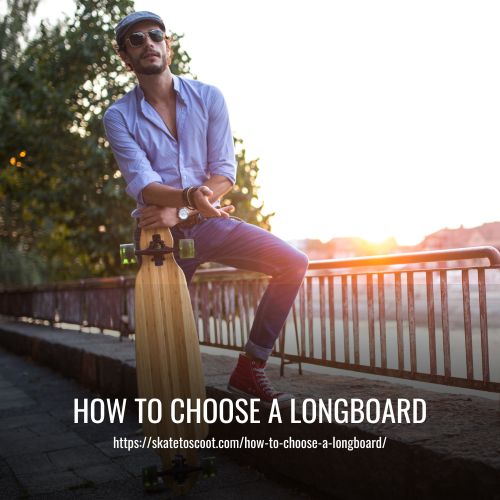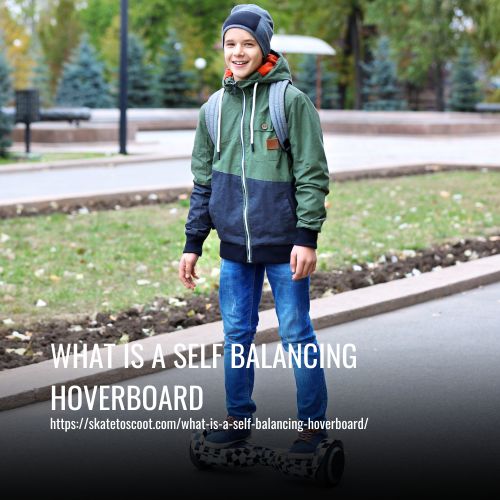As an Amazon Associate we earn from qualifying purchases.
Consider your riding style and skill level when choosing a longboard. Different styles require different features. Next, consider the size and shape of the board. Shorter longboards are more maneuverable and better for tricks, while longer boards offer stability and speed for downhill riding. The deck shape and nose design can also impact how the board performs.
Wheel hardness is a significant factor to consider. Harder wheels are more suitable for smooth surfaces and high speeds, whereas softer wheels offer a smoother ride and better shock absorption. Trucks are also crucial components to consider. Traditional kingpin trucks are more responsive and better for freestyle riding, while reverse kingpin trucks are more stable and suitable for downhill rides.

Common Longboard Riding Styles:
When choosing a longboard, it’s important to consider your riding style. There are several common riding styles to choose from, including cruising, freestyle/dancing, long-distance push, and downhill/freeride.
- Cruising longboards are great for beginners. They are typically designed for smooth rides and easy maneuverability. These boards are perfect for leisurely rides or commuting.
- Freestyle and dancing longboards are ideal for those who want to perform tricks and fancy footwork. They usually have a shorter deck and softer wheels, allowing for greater control and flexibility during tricks.
- Long-distance push longboards are designed for covering long distances. They are typically lighter and have larger, harder wheels for more efficient pushing. These boards are great for fitness enthusiasts or those looking to explore new places on their longboards.
- Downhill and freeride longboards are for the more advanced riders. These boards are built for high speeds and technical maneuvers. They often have longer decks, narrower noses, and different types of trucks and wheels to enhance stability and control at high speeds.
It’s important to choose a longboard that matches your skill level and preferred riding style. If you’re a beginner, opt for a cruising or freestyle/dancing board to get started. As you gain experience, you can explore the more advanced disciplines like downhill and freeride.
Choosing The Right Longboard For You: What To Look For?
Choosing the right longboard for you can greatly enhance your riding experience. Here are key features to consider when selecting a longboard that suits your riding style:
1. Deck size and wheelbase:
- Larger decks and longer wheelbases offer more stability and can handle higher speeds without wobbles.
- However, larger boards generally have a wider turning radius.
2. Deck height:
- The distance between the deck and the ground affects the riding feel.
- Higher decks are harder to push and brake on, while lower decks (like dropped decks) are more pushable and stable.
3. Mount type:
- Topmount decks are designed with the deck placed on top of the trucks, which allows for improved wheel leverage and responsiveness.
- Drop-through decks are designed with trucks mounted through the deck, which leads to a lower center of gravity and enhanced stability.
4. Deck flex and profile:
- Flexier decks are well-suited for carving and pumping, but they may not be optimal for high speeds.
- Camber and rocker, which influence the curvature, have an effect on flex and bounce.
5. Deck concave and kicks:
- Foot pockets on the deck allow for foot lock-in, making them great for carving, freeriding, and freestyle.
- Kicktails are important for tricks and street cruising.
6. Truck style:
- Reverse kingpin (RKP) trucks are commonly used for a variety of riding styles because of their optimal height and maneuverability.
- Traditional kingpin trucks (TKP) are commonly used for freestyle tricks and occasionally for downhill racing.
7. Truck width and angle:
- The width of the trucks should match the size of the deck.
- Baseplate angle, the angle between the deck and pivot affects lean vs turn and is crucial for carving, pumping, and freeriding.
8. Bushings:
- The hardness of the bushings should be chosen based on your weight.
- Softer bushings are typically used for carving and pumping, while harder bushings are generally preferred for tricks.
9. Wheel diameter and lip profile:
- Bigger wheels roll faster, but make sure there is enough clearance between the wheels and the deck.
- Squared lips offer enhanced grip, whereas rounded lips facilitate smoother sliding.
10. Wheel durometer:
- Harder wheels roll faster on smooth surfaces, while softer wheels are better for rough surfaces and offer better suspension.
11. Bearings:
- Higher quality bearings result in longer wheel rolling with a single push.
- Ceramic bearings are the most frictionless, but normal bearings can work well with proper maintenance.
By considering these features and their suitability to your riding style, you can choose the right longboard that perfectly matches your preferences and enhances your riding experience.
What shape should you get?
When choosing a longboard shape for freestyling, there are a few key features to consider. Firstly, cocktails are essential for popping and performing tricks. Ideally, look for a board with two cocktails on each end for versatility. Additionally, a symmetrical deck allows you to ride in any direction without limitations.
While concave is not essential for freestyling, it can enhance your performance. Concave refers to the curvature along the width of the deck, which helps in locking your feet on the board during sharp turns. This feature can be particularly beneficial for advanced freestylers looking for extra stability.
What size should your deck be?
When it comes to choosing the right longboard deck size, it’s important to find a balance between maneuverability and stability. With longboard lengths ranging anywhere from 32″ to 59″, it can be overwhelming to choose the perfect size.
Shorter longboard decks, typically around 32″ to 42″, are ideal for those looking to do tricks like kickflips or no complies. These boards are lighter and require less rotation, making it easier to perform technical maneuvers. If freestyle tricks are your main focus, a shorter board will provide the agility you need.
On the other hand, longer longboard decks, generally around 42″ or longer, offer a more stable and smooth ride. These boards give you more foot space and a surf-like feel, perfect for cruising or dancing on your longboard. While they may be heavier, the added control and room for foot placement make up for it.
For beginners or those looking for a versatile longboard, we recommend starting with a deck size of around 42″. This size provides enough foot space for dancing and freestyle tricks, while still being manageable in terms of weight. As you gain experience and determine your riding style, you can always adjust the size of your deck to better suit your preferences.
What kind of trucks suit you?
When it comes to choosing the right trucks for your longboard, it is important to consider your riding style and preferences. There are two main types of truck placements: top-mount and drop-through.
Top-mount boards have decks mounted on top of the trucks. These trucks are more suitable for freestyling and dancing, as they provide you with more leverage to turn sharper angles. Additionally, since the deck is higher from the ground, it is easier to pop the board for tricks.
On the other hand, drop-through boards have trucks that go through and above the deck, bringing it lower. This truck placement provides a lower center of gravity, making it better for downhill riding and freeriding. However, due to the lower placement, you may not be able to achieve the sharpest turns for certain tricks.
Is flex good in your longboard?
Flex is an important factor to consider when choosing a longboard. It refers to the degree of softness or hardness of the longboard’s deck. While some riders prefer a stiffer board for high performance and speed, having a little flex in your longboard can provide several benefits.
Firstly, a board with flex offers better shock absorption, making it more comfortable for longer rides and sessions. This is particularly important for freestyle, dancing, and cruising longboards, where riders spend extended periods on their boards. The flex helps to reduce the impact on your joints, preventing fatigue and discomfort.
Additionally, a softer or medium flex deck can be beneficial for beginners. It provides a more forgiving ride, helping new riders maintain stability and control as they build their skills. It can also help minimize the risk of injuries, allowing beginners to progress at their own pace without unnecessary strain on their bodies.
That being said, the amount of flex you choose ultimately depends on your riding style and personal preference. If you’re into high-performance or downhill riding, a stiffer board might be more suitable. However, for freestyle tricks, cruising, and general enjoyment, a board with some flex will provide a smoother and more comfortable ride.
What price should you be paying?
When it comes to buying your first longboard, it’s understandable that you might want to keep your budget in check. Longboards can be quite expensive, with some models costing up to $700 in Singapore. However, it’s important to remember that price doesn’t always equate to better learning and skills.
To ease yourself into this hobby without breaking the bank, it’s advisable to limit your budget when purchasing your first longboard. There’s no need to spend a fortune on an expensive board that you might potentially damage as you learn and progress. Instead, consider investing your money in better experiences, such as going on a trip to Bali, for example.
Wheelbase By Longboard Style:
When it comes to choosing the right longboard, one important factor to consider is the wheelbase. The wheelbase refers to the distance between the front and rear wheels of the board. The length of the wheelbase greatly affects the performance and feel of the longboard.
For riders who prefer freestyle tricks and maneuvers, a shorter wheelbase is recommended. This allows for a more responsive and snappy ride, making it easier to execute tricks and quick turns. Shorter wheelbases are also ideal for riders who enjoy carving and cruising around the city streets.
On the other hand, if you prioritize stability and a smooth ride, a longer wheelbase is the way to go. Longboards with longer wheelbases provide better control at high speeds and are more suited for downhill riding. They offer a more stable platform, making them ideal for riders who are looking to push their limits and hit top speeds.
FAQs
For someone who is 5’4″, a longboard that is around 9″ wide would be a good choice. This width will provide enough space for you to move around and maintain stability while riding. Additionally, considering a board with more concave can help keep your feet in place during carving. In terms of length, a board between 38-42″ would be ideal for your height.
It’s important to find a board that feels comfortable and natural to ride, so don’t hesitate to try out different sizes and styles until you find the perfect fit.
A 40-inch longboard can be a great choice for beginners. It provides stability and control, making it easier to learn and ride. However, it’s important to find a board that feels comfortable and gives you confidence while riding. With practice, you’ll be able to master your new longboard and enjoy cruising around.
There are several types of longboards, including cruiser, downhill, freestyle, and slalom. Cruiser boards are typically used for leisurely rides, while downhill boards are specifically designed for speed and stability in races. Freestyle boards are commonly used for performing tricks and stunts, and slalom boards are built to facilitate carving turns and achieving high speeds.
Longboards and skateboards differ in size and shape. Longboards are longer and have bigger wheels. They also come in various shapes for different riding styles. Some have a concave shape for better turning, while others have a kicktail for tricks and flips.
A longboard has many parts: the deck, trucks, wheels, bearings, and grip tape. The deck is where you stand. The trucks connect the wheels to the deck. The wheels are made of polyurethane and are softer than skateboard wheels. Bearings let the wheels spin freely. Grip tape is put on the deck to provide traction and keep your feet in place while riding.
When choosing a longboard, consider your riding preferences. Do you want to cruise, race downhill, perform tricks, or carve turns? Knowing your preferences will help you find a suitable longboard. It’s important to choose a board that matches your riding style and feels comfortable to ride. Refer to our table above for recommendations.
Conclusion:
Choosing a longboard doesn’t have to be a daunting task. By considering your riding style, skill level, and the type of terrain you’ll be riding on, you can find the perfect longboard that suits your needs. Don’t be afraid to try out different shapes and sizes to find the one that feels the most comfortable and enjoyable for you.
With the right longboard, you’ll be able to experience the thrill and freedom of cruising and carving to your heart’s content. So, go out there, do your research, and get ready to embark on an exciting longboarding journey.
Amazon and the Amazon logo are trademarks of Amazon.com, Inc, or its affiliates.



